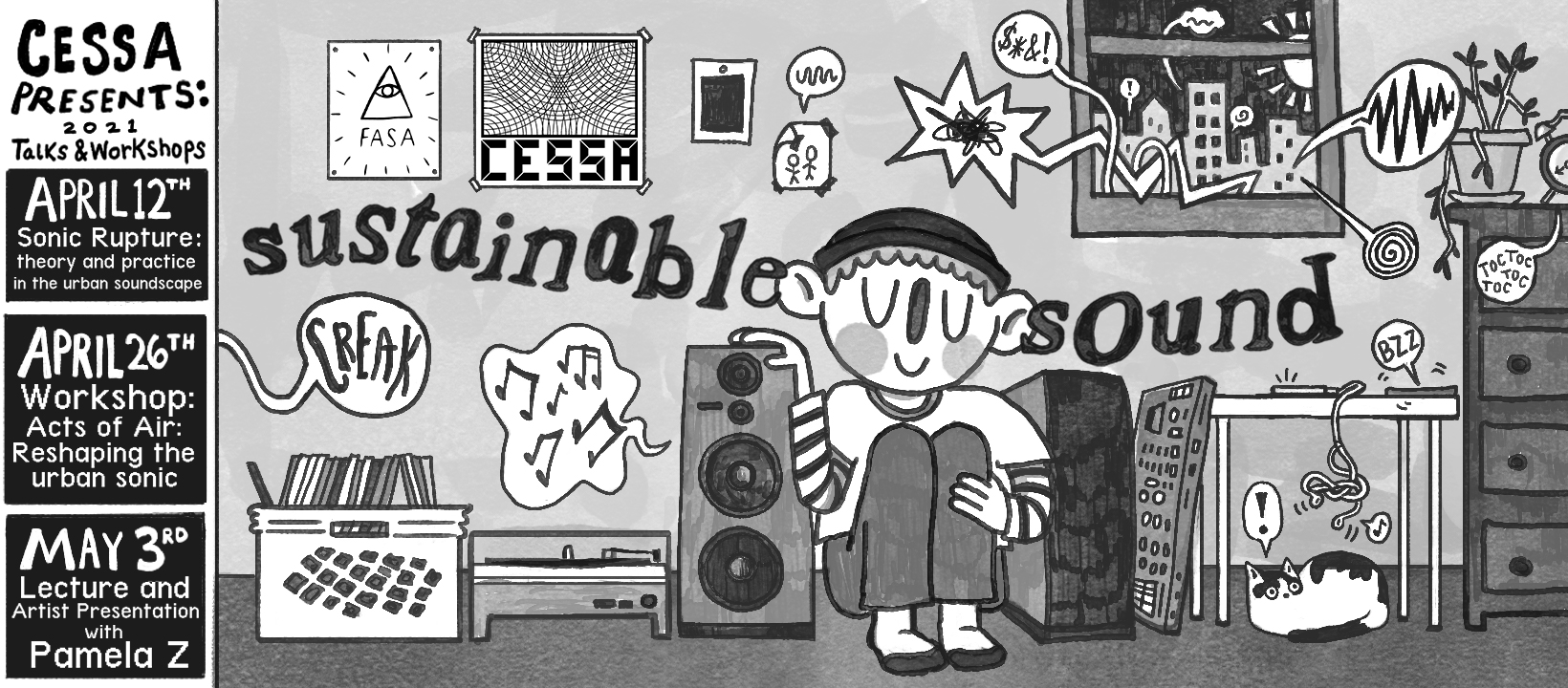CESSA’s upcoming series of workshops will explore the relationship between sound, music, and the environment
“How we live, what we consume, and how we interact with our environment has a direct impact on the world of future generations,” said Malte Leander, president of the Concordia Electroacoustic Studies Student Association (CESSA) and head of the club’s board association.
CESSA will be hosting Sustainable Sound, a series of workshops and lectures centred around the relationship between sound, music, and the environment.
CESSA represents students within Concordia’s Music Department, however those in other departments or areas of study are encouraged to apply. They aim to facilitate collaborations with other departments and student associations through initiatives that will benefit students in the program.
The presentations, which will explore acoustic ecology, sustainability, noise, and the interstices of the aforementioned, will take place throughout April and May and will feature speakers from around the globe.
The positive thing about virtual events is the possibility for people to join in from anywhere,” said Leander, adding that the guest speakers are from Australia, the United Kingdom, and the United States; each bringing their own perspective on the notion of place.
In Jordan Lacey’s lecture, Sonic Rupture: theory and practice in the urban soundscape, the artist and researcher will be discussing the relationship between urbanity and nature via sonic encounters. Lacey is a Melbourne-based sound researcher, curator, and musician. His work explores urban design and sound art.
In Acts of Air: Reshaping the urban sonic, Lisa Hall will be hosting a workshop where viewers will be invited to enact and embody sound-works within the urban environment. After her lecture, participants will be asked to perform one of the discussed artworks within their environment and subsequently share their experience with the group.
Hall is a London-based sound-artist who uses audio and performance to explore urban environments. She does this by using audio and performance to intervene and interrupt, in an effort to raise questions and explore possibilities within a space.
In Pamela Z’s lecture and presentation, the composer and performer will be discussing her work in the artist space. Z works primarily with sampled sound and electronic processing.
Though the artists all work in different capacities, they all aim to uncover the relationship between sound, our environment, and the place we hold in relation to the two.
“An area not nearly spoken enough about is how our sonic environments affect us; our health, concentration levels, and sleep patterns,” said Leander. “In the case for most of us, that sonic environment is the roar that is the urban soundscape of Montreal.”
With environmentalism becoming increasingly popular throughout many aspects of everyday life, Leander notes that there is equally a “green” movement within the topics of acoustic ecology and ecoacoustics, which have been around for quite some time.
The urgency of change for a more sustainable future calls for a bigger integration of reflection upon sustainability and a call for change; both through what means, and in what way that audio is produced and composed, but also how the topics are approached,” said Leander.
Leander added that purposefully producing reflective art around environmentalism can yield deeper reflections within the public and the listener. In turn, potentially contributing to acts of change within other aspects of life.
“We are wanting to raise awareness about these things in an attempt to make more people more conscious of our surroundings, also in the domain of sound,” said Leander. “The sounds around you affect you more than you think.”
For more information about the Concordia Electroacoustic Studies Student Association, follow them on Instagram or visit their Bandcamp. To register for Sustainable Sound, visit their Facebook page.
Feature graphic courtesy of Allie Brown.
